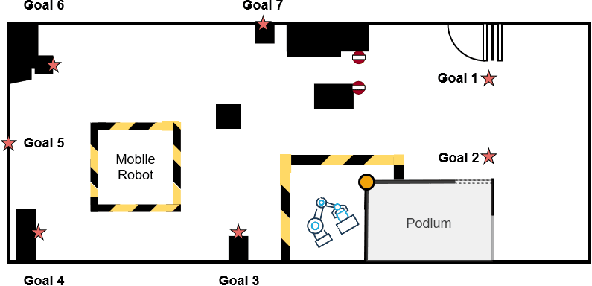Oscar Martinez Mozos
Likely, Light, and Accurate Context-Free Clusters-based Trajectory Prediction
Jul 27, 2023



Abstract:Autonomous systems in the road transportation network require intelligent mechanisms that cope with uncertainty to foresee the future. In this paper, we propose a multi-stage probabilistic approach for trajectory forecasting: trajectory transformation to displacement space, clustering of displacement time series, trajectory proposals, and ranking proposals. We introduce a new deep feature clustering method, underlying self-conditioned GAN, which copes better with distribution shifts than traditional methods. Additionally, we propose novel distance-based ranking proposals to assign probabilities to the generated trajectories that are more efficient yet accurate than an auxiliary neural network. The overall system surpasses context-free deep generative models in human and road agents trajectory data while performing similarly to point estimators when comparing the most probable trajectory.
The Magni Human Motion Dataset: Accurate, Complex, Multi-Modal, Natural, Semantically-Rich and Contextualized
Aug 31, 2022



Abstract:Rapid development of social robots stimulates active research in human motion modeling, interpretation and prediction, proactive collision avoidance, human-robot interaction and co-habitation in shared spaces. Modern approaches to this end require high quality datasets for training and evaluation. However, the majority of available datasets suffers from either inaccurate tracking data or unnatural, scripted behavior of the tracked people. This paper attempts to fill this gap by providing high quality tracking information from motion capture, eye-gaze trackers and on-board robot sensors in a semantically-rich environment. To induce natural behavior of the recorded participants, we utilise loosely scripted task assignment, which induces the participants navigate through the dynamic laboratory environment in a natural and purposeful way. The motion dataset, presented in this paper, sets a high quality standard, as the realistic and accurate data is enhanced with semantic information, enabling development of new algorithms which rely not only on the tracking information but also on contextual cues of the moving agents, static and dynamic environment.
 Add to Chrome
Add to Chrome Add to Firefox
Add to Firefox Add to Edge
Add to Edge